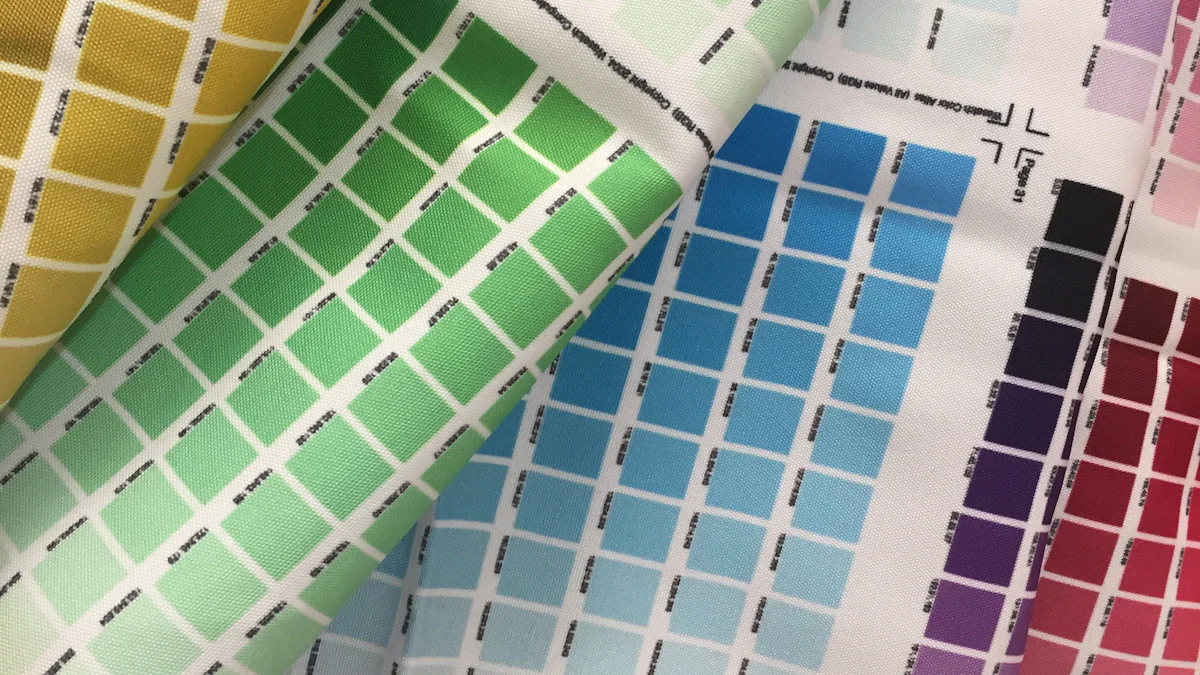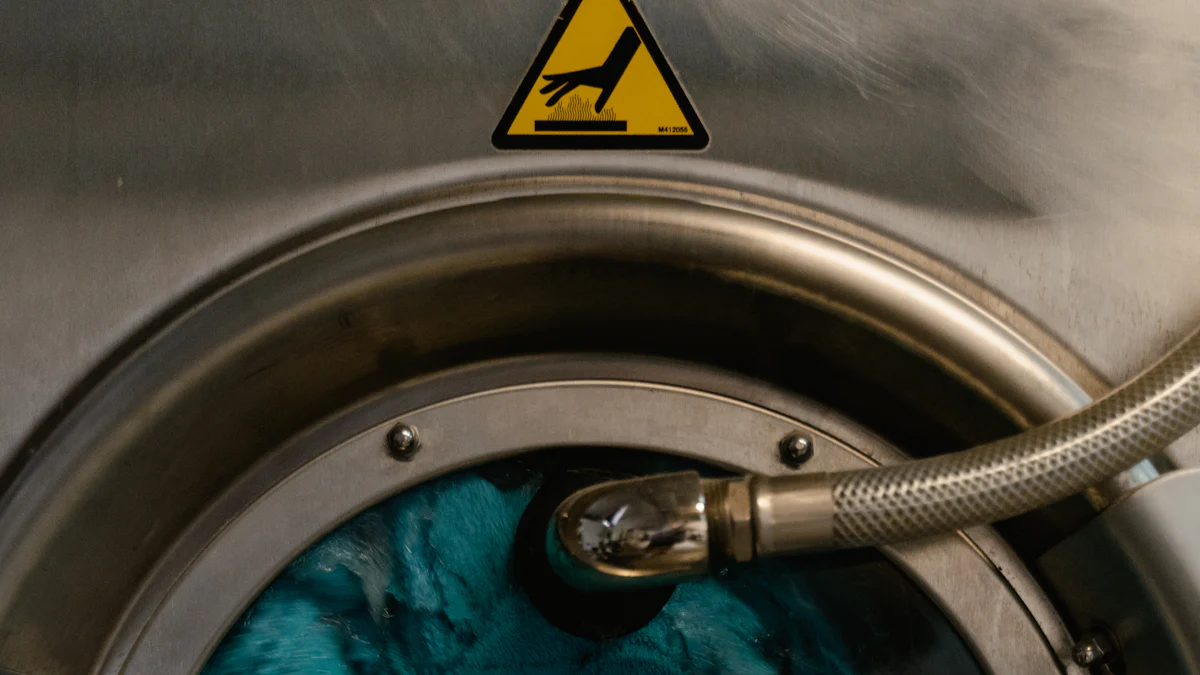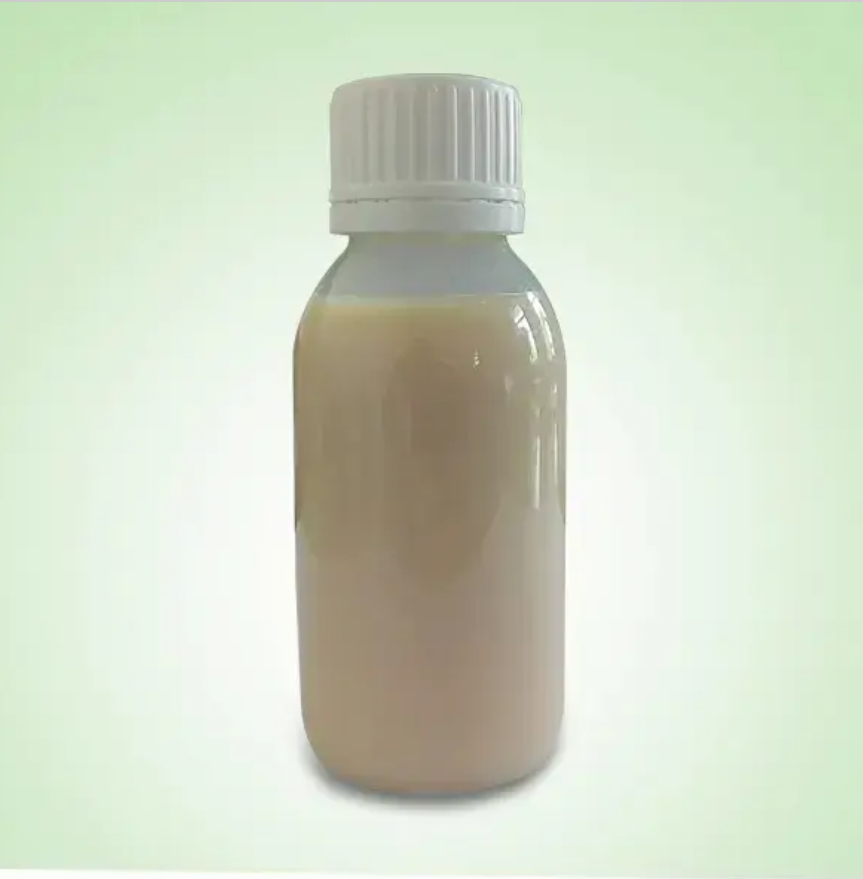Soil release technologies play a vital role in modern textiles. They enhance stain removal efficiency while reducing the need for harsh chemicals. Non-PFAS solutions, for example, achieve AATCC ratings of 4-4.5 after 25 washes, outperforming older methods. Soil release agent suppliers now focus on sustainable innovations that meet environmental and performance goals.
Key Takeaways
- Non-PFAS soil release methods are becoming more popular. They are better for the environment and remove stains well. These methods also keep fabrics strong and lasting longer.
- Biodegradable coatings are now important in making clothes. They are good for nature and work well, matching what buyers want in eco-friendly items.
- Teamwork between soil release makers and scientists creates new ideas. This teamwork helps make better, greener products that follow industry rules.
The Evolution of Soil Release Technologies

From Traditional Coatings to Advanced Solutions
Soil release technologies have come a long way. In the past, traditional coatings relied on basic chemical treatments to repel stains. These coatings often lacked durability and required frequent reapplications. Over time, advancements in chemistry introduced more robust solutions. Today, I see a shift toward advanced materials that not only resist stains but also enhance fabric performance. These innovations improve washability and extend the lifespan of textiles. This evolution reflects the growing demand for high-performing, long-lasting fabrics.
Moving Beyond PFAS-Based Chemistries
PFAS-based chemistries dominated soil release technologies for decades. However, their environmental and health risks have become a major concern. Let me share some key issues associated with PFAS:
| Concern Type | Description |
|---|---|
| Widespread occurrence | PFAS found in human blood and urine raises questions about health impacts. |
| Numerous exposures | PFAS are present in hundreds of products, increasing human exposure risks. |
| Growing numbers | Nearly 15,000 synthetic PFAS chemicals exist, complicating regulation. |
| Persistent | PFAS remain in the environment indefinitely, posing long-term risks. |
| Bioaccumulation | Humans may accumulate PFAS over time, leading to higher exposure levels. |
| Health effects | Includes altered metabolism, increased cancer risk, and immune suppression. |
The industry now prioritizes non-PFAS alternatives. These solutions address environmental concerns while maintaining excellent soil release performance. Soil release agent suppliers play a crucial role in driving this transition.
Industry Standards and Their Role in Innovation
Industry standards guide the development of soil release technologies. Organizations like AATCC establish benchmarks for stain resistance and durability. These standards push manufacturers to innovate and meet higher performance levels. I believe this creates a competitive environment where companies strive to exceed expectations. As a result, we see more sustainable and efficient solutions entering the market. Standards also ensure consistency, helping consumers trust the quality of textile products.
Key Trends in Soil Release Technologies for 2025

Non-PFAS Chemistries and Their Growing Adoption
Non-PFAS chemistries have become a game-changer in soil release technologies. I’ve noticed their adoption growing rapidly due to their environmental and performance benefits. These alternatives to traditional agents offer several advantages:
- They work effectively across various fabric blends.
- They simplify stain removal while resisting soiling.
- They maintain fabric breathability, which is essential for comfort in workwear and children’s clothing.
Businesses and consumers alike benefit from these innovations. Non-PFAS solutions also help preserve the appearance and durability of textiles, even in demanding environments. Soil release agent suppliers are leading this shift, ensuring these technologies meet both sustainability and performance goals.
Biodegradable and Eco-Friendly Finishes
Biodegradable finishes are another exciting trend. These finishes break down naturally, reducing their environmental footprint. I’ve seen eco-friendly solutions gaining traction as consumers demand greener products. These finishes not only align with sustainability goals but also deliver excellent soil release performance. They represent a step forward in creating textiles that are both functional and environmentally responsible.
Smart and Responsive Materials in Textiles
Smart materials are revolutionizing soil release performance. These materials adapt to their environment, offering unique benefits. For example:
- Some technologies use hydrophilic blocks that swell in water, making it easier to release oily soils.
- Others balance fiber-oil and fiber-wash interfacial energies to optimize stain removal during washing.
I find these innovations fascinating because they combine advanced chemistry with practical applications. Companies like Milliken are tailoring formulations to meet specific needs, such as enhancing softness or durability.
AI-Driven Optimization for Soil Release Performance
Artificial intelligence is transforming how we develop soil release technologies. AI helps optimize formulations by analyzing vast amounts of data. This leads to more efficient solutions tailored to specific fabric types. I believe AI will continue to drive innovation, making soil release agents more effective and sustainable.
Enhanced Solutions for Poly/Cotton Blends
Poly/cotton blends present unique challenges for soil release. Maintaining performance without PFAS chemistries is no small feat. I’ve observed that new formulations must ensure durability over multiple washes while adapting to different fabric types. These advancements are crucial for industries like workwear, where poly/cotton blends are common.
Practical Applications and Industry Impact
Workwear and Uniforms: Balancing Durability and Functionality
Workwear and uniforms demand high durability and easy maintenance. I’ve seen soil release technologies play a critical role in meeting these needs, especially for 65/35 poly/cotton blends. These technologies simplify cleaning, reducing the frequency of uniform replacements. Industrial laundries benefit significantly from this, as they rely on these fabric blends for efficient operations.
Stain-free uniforms also project a professional image, which is essential for customer-facing roles. Outdoor clothing, another key area, gains extended lifespan through soil release functionalities. These finishes protect garments from staining substances, making maintenance easier for outdoor enthusiasts. Soil release agent suppliers continue to innovate in this space, ensuring these solutions meet both performance and durability requirements.
Consumer Textiles: Addressing Sustainability Demands
Sustainability has become a top priority for consumers. I’ve noticed a growing demand for eco-friendly textiles that combine functionality with environmental responsibility. Soil release technologies now incorporate biodegradable finishes, reducing their ecological footprint. These advancements align with consumer preferences for greener products while maintaining excellent stain resistance. Soil release agent suppliers are at the forefront of this shift, driving the adoption of sustainable solutions in consumer textiles.
Innovations in Carpets and Upholstery for High-Traffic Areas
High-traffic areas like offices and public spaces require carpets and upholstery that resist stains effectively. Non-PFAS formulations have emerged as a game-changer in this domain. These technologies integrate directly into fabrics during dyeing and finishing, enhancing their performance. Advanced testing methods ensure these solutions perform well under real-world manufacturing conditions. I find these innovations particularly exciting because they address both environmental concerns and practical needs.
Testing and Quality Assurance in Soil Release Technologies
Testing and quality assurance ensure soil release technologies deliver consistent performance. I’ve observed that methods like AATCC Test Method 130 evaluate oily soil-release by applying corn oil to fabric and comparing results to photographic standards. AATCC Test Method 151 measures soil repositioning by exposing fabrics to soiling mediums, while AATCC Test Method 79 assesses moisture transport. These rigorous tests help soil release agent suppliers maintain high-quality standards, ensuring reliable results for end-users.
The Role of Soil Release Agent Suppliers
Meeting Industry Demands for Sustainable Solutions
Soil release agent suppliers play a vital role in addressing the growing demand for sustainable solutions. I’ve noticed that many suppliers now focus on creating products that reduce environmental impact without compromising performance. They develop non-PFAS chemistries and biodegradable finishes to meet industry standards. These innovations help manufacturers produce textiles that align with global sustainability goals. By prioritizing eco-friendly materials, suppliers ensure that their solutions meet both environmental and functional requirements.
Driving Innovation Through Collaboration and Research
Collaboration drives innovation in soil release technologies. I’ve seen suppliers partner with universities, research institutions, and industry leaders to develop cutting-edge solutions. For example, companies like JIN DUN Materials work closely with top universities to advance light-curing material technology. These partnerships accelerate the development of high-performing, sustainable finishes. Suppliers also invest in research to refine formulations and improve durability. This commitment to innovation ensures that soil release technologies continue to evolve and meet the needs of diverse industries.
Aligning with Consumer Preferences for Eco-Friendly Products
Consumer preferences for eco-friendly products have shifted significantly in recent years. I’ve observed that suppliers adapt their strategies to align with these trends. Many consumers now prioritize health, safety, and environmental impact when purchasing textiles. A recent survey revealed that 72% of respondents buy more environmentally friendly products than five years ago, and 81% plan to increase these purchases in the next five years. Suppliers respond by offering solutions that address these concerns. They focus on creating finishes that are safe, sustainable, and effective. This alignment with consumer values strengthens trust and drives market growth.
Soil release technologies are transforming the textile industry in 2025. Non-PFAS solutions enhance sustainability and cleaning efficiency, especially for workwear. These innovations address environmental concerns while improving consumer safety. I see this shift driving eco-friendly practices across manufacturing. As innovation continues, textiles and carpets will evolve, meeting both performance and sustainability goals.
FAQ
What are soil release technologies, and why are they important?
Soil release technologies improve stain removal from textiles. They reduce cleaning effort, extend fabric lifespan, and enhance sustainability by minimizing the need for harsh chemicals.
How do non-PFAS chemistries benefit the environment?
Non-PFAS chemistries eliminate harmful, persistent chemicals. They reduce environmental contamination and health risks while maintaining excellent stain resistance and fabric performance.
Can biodegradable finishes match traditional soil release performance?
Yes, biodegradable finishes perform effectively. They combine eco-friendliness with durability, ensuring textiles remain stain-resistant while reducing their environmental impact.
Post time: Jan-17-2025


